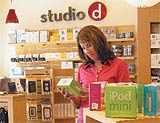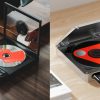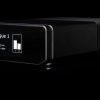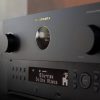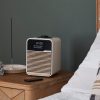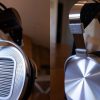Closing the Gender Gap
The conventional wisdom is that men absolutely, positively and unequivocally hate to shop. And when men do shop, these sojourns are short and surgical. See the shirt. Buy the shirt. Leave.
When it comes to consumer electronics, however, things are different. Men suddenly want to browse and take their time comparing products. Women, on the other hand, enter a testosterone-fueled jungle of gadgetry. Suddenly, she’s the one who wants to get in and out quickly. “It’s totally a role reversal thing,” says James Chung, president of Reach Advisors, a Boston-based strategy and research firm. “For men, consumer electronics is one of the few shopping categories that’s entertainment. For women, it’s a lot less fun.”
Make it Exciting
That’s no wonder, considering that CE showrooms often gear sales pitches, demos and other parts of the experience to men. “The industry holds onto a stereotypical idea and they’re missing out on a big part of the marketplace,” says Linda Mariotti, CFO of Russound, a Newmarket, N.H.-based multi-room audio/video company. “I don’t think retailers handle women well. They ignore women almost completely or just consider them a niche market.”
Chung says, “Any retailer that hasn’t figured out that women matter is in trouble. To be sure, retailers and CE manufacturers alike are starting to change their attitudes, albeit slowly. And with women influencing some 80 percent of all household purchasing decisions these days, they have little choice.”
Very important factors to women when choosing a store to shop for CE products
Big selection: 51% Helpful salespeople: 46% Easy/convenient access: 39% Well organized/clean: 34% Useful product literature: 25% Good directional signs: 19% Comfortable lighting: 17% Source: CEA Market Research
According to recent CEA Market Research, men and women’s involvement in CE buying decisions now is roughly equal compared to 1998 when 59 percent of men were the sole initiators of CE product purchases compared to only 48 percent of women.
General interest in CE products also has equalized between men and women in recent years. “I just don’t see how they can see the numbers out there and not pay attention,” says Mariotti. Adds Carol Campbell, director of business development at CE marketing firm Marketing Matters: “There is screaming opportunity here.”
Parity
In many ways, this closing gap is a sign of the times: Women have more buying power and they increasingly use technology to manage their busy schedules. Women’s comfort level with technology is at an all-time high. And in few categories has women’s influence ramped up more noticeably than in the home theater and display markets, which are growing exponentially. According to CEA’s 2005 CE Ownership and Market Potential Study, current HDTV penetration is at 13 percent (sales adjusted) or approximately 14.4 million households. About 10 million households say they plan to buy an HDTV within the next year.
Style Is Key
In the not-so-distant past, boxy big-screen TVs and cavernous speakers that took up lots of space was mostly a guy thing. Women'”horrified by the questionable aesthetics of hulking electronics everywhere'”often relegated such systems to the basement where the male could bask in technophile glory. But in recent years, technology has brought sleek flat-screen LCD and plasma displays, as well as smaller speakers that are even better than their monster-sized predecessors.
What are the most irritating things about shopping for CE products?
Salespeople who can’t help you: 74% Pushy salespeople: 70% Lack of selection/Out of stock: 66% Crowded stores: 26% Poor product displays: 23% Store not easy to browse: 18% Loud music: 16% Other: 2% Source: CEA Market Research
According to CEA, flat-screen TVs are present in 10 percent or 10.8 million U.S. households, with another 10.8 million households planning to buy a flat-screen within the next year. To assume that women aren’t represented in those numbers is to overlook reality.
Witness the recent shift in buying patterns at Chicago retailer Abt Electronics, which is billed as the largest single-store CE retailer in the United States. President Mike Abt says that while women were always attracted to the store’s wide selection of household appliances, they traditionally showed less interest in its big-screen TVs. But that all changed a few years ago as affordable, sleek flat-screens started appearing in the 80,000 square-foot showroom.
Abt estimates that, at least at his store, women are the driving factor in flat-screen purchases about 60% of the time.
“Women saw those thin TVs and started to get excited,” says Abt, noting that couples shopping for appliances often end up in the TV section of the store based on the urging of the woman, not the man. “So often, the women will say, ‘Hey honey, look at this TV’. The woman is pushing the sale. This is really recent for us.” Abt estimates that, at least at his store, women are the driving factor in flat-screen purchases about 60 percent of the time. He says that compares with only about 15 percent of the time a few years ago.
Catering to Women
Such trends are forcing retailers and manufacturers to take notice. Major national retailer Best Buy, for example, recently started testing a new store concept called Studio D. The stores are smaller (3,500 to 5,000 square feet), feature fewer products and emphasize a more personal and intimate shopping experience. “It’s more like a Starbucks or Barnes & Noble than a Best Buy,” says Chung. “Even if it doesn’t pan out, they will have learned a ton about their female customers.”
Women rank the importance of each in CE products:
Functionality 51% Durability 23% Ease-of-use 21% Style/design 5% Source: CEA Market Research
At Studio D, retail associates walk customers through products and encourage browsing that can take hours. Customers can attend demonstrations and training sessions that emphasize lifestyle enhancements rather than technical jargon. In October 2004, Best Buy also launched a separate $50 million initiative to convert 68 stores in California to specialized outlets targeting high-growth customer segments. Twelve of the new stores are devoted to the “busy suburban moms” category. Executives hope the stores will yield customer data they can use to tweak sales tactics at its nearly 800 stores nationwide.
According to the experts, Best Buy has realized something important: women are just as interested in CE products as men'”but for different reasons. “Don’t talk about technology with women,” says Lori Robinson, New York director of marketing communications for Hill & Knowlton. “It’s not about megabytes or pixels. Don’t talk about screen size. It’s about features that relate to their lifestyle.”
When women intend to purchase a product, they are most likely to:
Browse before making the purchase 43% Purchase the product and accessories 30% Make the purchase quickly and leave 23% None of the above 2% Source: CEA Market Research
Tailor It to Lifestyle
For example, women may view a home theater system as a way to enhance the home environment rather than another powerful toy to brag about to friends (a key consideration for men, after all). “She is less interested in the product specs and more interested in how the products will enrich her life or her family’s life,” says Bonnie Ulman, founder of Marietta, Ga.-based The Haystack Group.
Women who have not made a purchase because they were ignored or treated poorly by a salesperson
Yes: 65% No: 20% Yes, once: 11% Don’t know: 4% Source: CEA Market Research
Campbell says many retailers go wrong from the start, choosing, for example, to demo home theater systems using only explosion-laden action movies rather than also showing movies more geared to women. “You’ve got to create environments they’re used to,” she says. “That may mean demoing with chick flicks.”
Campbell says retailers could even show daytime TV shows popular with women on the screens in their display windows or offer babysitting services. Why not schedule a showing of a kids’ movie on one of the home theater systems so that the mom has time to fall in love with the product? “Women love music,” she says. “They love theater. Who is typically in charge of the cultural life within a family and in the home? It’s usually the mom. Show her the elegance and the ambience.”
The trick for retailers is to highlight the aesthetic charm and simplicity generally more valued by women while wooing men with technical horsepower and performance. “Women are concerned with how the finished product will look and how it fits in with the decorating scheme,” says Jon Robbins, chief operating officer at HiFi House, a chain of three high-end audio/video stores in the Philadelphia area. “With men, it’s just the bigger the picture, the happier they are.”
“Women are intrigued by technology, but they’re suspicious of it. They’re interested in whether this is really easy-to-use.” Mark Morgan, Control4
Simplify My Life
Indeed, while women may find aesthetics and style more important than men, that doesn’t mean they aren’t concerned with technology. It’s just that they want to understand the comprehensive benefits. “Women are much more results oriented,” says Nancy Carr, vice president of worldwide marketing for Kodak, which has years of experience focusing on female customers. “She has no desire to figure out software. It’s about, ‘Make my life simpler. I’ve got too much to do.’ If you’re results driven, you’re going to design things to be much more intuitive.”
Philips Electronics, which has long understood the importance of marketing to women, realized early on that flat-screen TVs were an opportunity to bridge the gender gap with style and technology. Recent ad campaigns feature both male and female actors watching flat-screens in impeccably decorated homes. “We saw it from the beginning,” says Patrick Pondaven, Philips’ director of product marketing. “There was an attraction of both men and women. Women immediately were attracted by the design and that it was thin.”
Philips’ Mirror TV technology, which allows a flat-screen TV to become a standard mirror when it’s not in use, affects men and women differently. Men tend to ask about the technical specifications or how exactly it works, while “she just looks at it and says, ‘When I turn it off, it’s a mirror!'” says Andre Lalande, Philips’ director of product strategy and planning. Mirror TV also allows someone to watch a program in the corner while still using the rest of the mirror for other things.
Campbell says women appreciate such innovations because they create a direct benefit. “It’s just brilliant that I can watch Katie Couric as I’m applying my mascara,” she says.
In a similar push, Philips has been marketing its Amblight technology, which projects a tinted glow of light behind and around a flat-screen television'”helping to integrate it into the chosen dA©cor of the home (the light hue also can change based on the content showing on the display). Such features can help coax an otherwise skeptical buyer to make the purchase. “What might be missing is, ‘How will the TV fit in with my interior?'” says Pondaven.
More than ever, technology companies are working to find feature sets that equally excite men and women. In the growing field of home automation, for example, men may like the science-fiction element as well as the feeling of power that comes with centrally controlling electronics all over the house. Women, however, often worry about whether such systems will be too complicated or not work well.
“Women are intrigued by technology, but they’re suspicious of it,” says Mark Morgan, founder and vice president of marketing at home automation vendor Control4. “They’re interested in whether this is really easy-to-use.”
So the home-automation pitch for men might focus more on enhancements to the home theater system, while lighting or security systems might be a more appropriate starting point when pitching the product to women. “It all depends on what your hot button is,” says Morgan.
Of course, experts also emphasize that women’s desire for simplicity and elegance doesn’t mean they want superficially enhanced products. “The breakdown occurs when people think they can put a pink cover on it or a cup holder on it and be done,” says Paul Rand, director of Ketchum’s global technology practice.
Women want features that help them achieve their goals'”whatever they are. And experts note that women often heavily research CE products before they enter the showroom in order to fully understand how they work.
“They just do it differently than men,” says Robinson, who has helped companies ranging from Intel to Pioneer to Panasonic improve marketing to women. She says women enter retail outlets “looking for a lot of information and a confirmation of what they have learned.” The problem is that salespeople sometimes fail to listen or to ask the right questions.
Part of the solution also may be for stores to hire more female sales associates. Campbell, who teaches a course about selling CE products to women for corporate clientele, says the question comes a lot. “Recruiting that talent is the next best step,” she says. “You can’t wait for it to walk in the door.”
Whether it’s through hiring more female salespeople, offering more elegant products or cultivating more inviting shopping experiences, one thing is clear: The industry is finally showing that it cares what women want. And for female customers who may have felt neglected in the past, it’s not a moment too soon.
By Michael Grebb, Photography by Debi Fox
This material has been adapted from VISION — a bi-monthly magazine of the Consumer Electronics Asssociation


